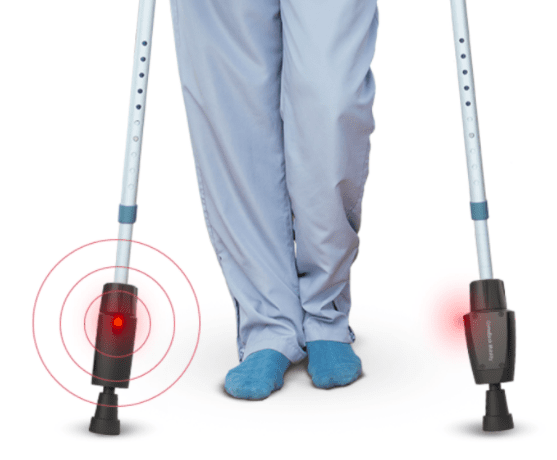Miroslav Vakulich
Orthopedist-traumatologist
Postgraduate, Department of Traumatology & Orthopedics at
Bogomolets National Medical University

Miroslav had been looking for new ways to help his patients come back to mobility when he found out about the clinical trials of prototype smart crutch devices developed by ComeBack Mobility.
According to Miroslav: “Gunshot fractures almost always split bones into multiple smaller pieces, so protected weight bearing is crucial for optimal recovery. There is no single, ready-made rehabilitation program; it should always be individualized. Since getting the right amount of weight bearing can be challenging for the patient, just as it is for the doctor to monitor whether their instructions are being followed, I am glad to have had a device that makes this possible“.
Miroslav spoke about the trials in more detail in his presentation on “Optimization of Long-Bone Fracture Treatment Using a Motion Monitoring Program” delivered within the framework of a scientific and practical conference on “Rehabilitation and Prosthetics/Orthotics of the 21st Century: Problems, Prospects and International Standards for Restoring Mobility” that took place on April 15th in Kharkiv, Ukraine.
Clinical Trials
Clinical Trials
Gunshot fracture of the femur
Doctor
Miroslav Vakulich
Orthopedist-traumatologist
Postgraduate, Department of Traumatology and Orthopedics (Bogomolets National Medical University)
Rehabilitation program
Graduated weight bearing
from 10% to 60% body weight
8 weeks
‘The weight bearing program was adjusted in the process of rehabilitation. Empirically, I always recommended that the patient put less pressure on the injured limb. However, as it turned out, more load could be allowed to help restore functions of support and walking. With an increase in weight bearing level, the patient had no discomfort and there were no signs of implant migration on X-rays.’
Miroslav’s observation
Femur X-rays 2 Month After Surgery





– No signs of implant migration
– Visible fracture union

Pain, Step & Load Dynamics





Indicators:
– Pain, VAS
– Number of steps, hundreds
– Load, % body weight

Over the course of eight weeks, the patient’s pain gradually decreased while the load on the operated limb and the number of steps increased. A week after surgery, the patient was prescribed 10% touch-toe weight bearing, which then progressed to 60% body weight by the 8th week.
Reduced Risk of Complications





– Osteomyelitis – by 1.2% ↓
– Pseudarthrosis – by 2.1% ↓
– Contracture of the large joints – by 8.1% ↓
(as opposed to the control group)

Miroslav’s Opinion on the Prototype Devices





In summary, Miroslav is satisfied with the work of the prototypes and is going to use the final product in his future practice to assist his patients in restoring functions of support and walking.
Pros
The amount of weight bearing is measured with high accuracy
Reduced risk of complications
Improved treatment outcomes in patients with multiple fractures
The weight bearing program is customizable
Data on the weight-bearing status are stored on the server (reporting)
The patient can provide feedback on pain and difficulty
User-friendly interface (mobile app)
Cons
Prototype
This technology doesn’t measure range of motion (goniometry)
The devices should last at least a week without charging
Long and complicated process of connecting the crutches to the app/phone
Improvements
Final Product
Goniometry is not included in the first version of the product
It is battery-powered and can last more than a week
The process is simplified: now the smart crutch tips work as one device






